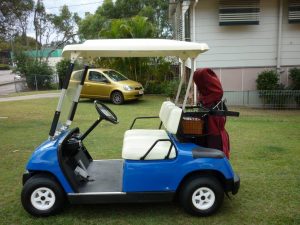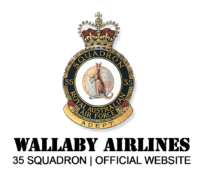My Story: John Sambrooks
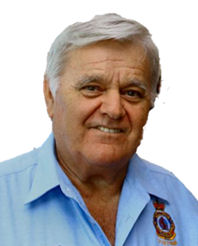
John Sambrooks
John (Sambo) was born and bred and grew up in Brisbane. He went to school at Grovelly (a northern suburb of Brisbane) and played league with the school and in 1959 was one of the initial players for the newly formed West Mitchelton team.
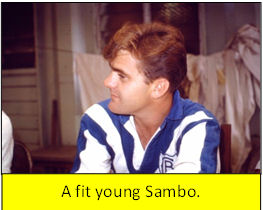
After school he started work at the now gone Arnotts/Morrows biscuit factory (which was on the corner of Coronation Drive and Boomerang St in Milton). Morrows started making biscuits and confectionary back in 1875 and in its day was one of the largest confectioner and biscuit manufacturing firms in Queensland. Morrows were the first firm in Australia to make “jelly-beans” which up to that time had been imported and was also the only firm in Australia making Christmas bon-bons.
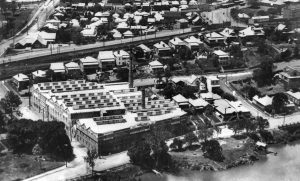
In the 1960’s it was consolidated into the Arnotts team and for years was known as Arnotts/Morrows. It finally went to make way for the “Go-Between” bridge.
Sambo lasted there for 1 year, one of his tasks was to monitor the huge conveyor belt that fed the biscuits into the baking ovens. The belt was pretty old and would occasionally wander off the rollers, so a “belt watcher” would monitor the rollers and if and when necessary make adjustments to keep the belt on the straight and narrow. One day Sambo had been monitoring the belt from end to end and as it was working perfectly, he thought he would “nick off” for a few minutes to grab a coffee. When he got back he found the belt had run off the rollers and was busily dumping tons of biscuits onto the dusty old floor. He was called into the office and given an immediate DCM.
After Arnotts he went to MetalCraft and began a sheet metal worker apprenticeship. MetalCraft manufactured commercial refrigeration cabinets for industry and after 4 years as a Bratt and a 1 year indenture to the firm, he got his tickets. In 1964 his marble was pulled from the barrel and it looked like he was off to the Army as a Nasho, but, as he was in his last year of an apprenticeship, his enlistment was deferred. In 1965, now as a tradesman and not wanting to walk when you can fly, he applied to join the RAAF as a metal worker. He was taken to Amberley to undergo a trade test which he passed and was told he would be on the next intake in Jan 1967.
In Jan 1967 it was off to Edinburgh for Rookies, after which he was posted to 34Sqn at Canberra. At that stage he had never worked on aircraft and found the work was completely different to what he had been doing, luckily he had a sympathetic mate from 5Sqn who took him under his wing and got him up to speed. While there he played league for the RAAF and was in the grand final team that lost to Bungendore 5:3.
A funny thing happened at the end of the game, tradition had it that grand final teams swapped guernseys after the final bell, which they all did, but back in the change rooms Mr RAAF wanted the guernseys back as, under the RAAF’s equipo rules, their life had not expired and every member of the team had to pay a nominal amount to cover the costs.
One night, at about 7.00pm, he and 7 others, 4 of whom were girls, climbed into a mate’s Datsun Bluebird (designed to carry 4), armed with several cartons of Toohey’s finest and headed off into town for a party. While approaching Mach 2 along the two lane Canberra Avenue, the driver started to swerve in and out of traffic, causing Newton’s law to assert itself. The C of G of the poor little Datto was way out of kilter and it lurched into 7 end to end rolls from which Sambo suffered a broken left leg. One of the girls was hysterical over a broken finger nail and the others had only minor abrasions – what do they say about limp falling??
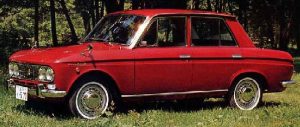
After 18 months at Canberra he was posted to 1BOCU (Bomber Operational Conversion Unit) at Amberley to work on the Canberras – at which unit he became proficient in his trade. 34Sqn was a VIP passenger carrying squadron and its aircraft always flew straight and narrow and did not suffer a lot of damage – consequently there was not a lot for a metal basher to do. The Canberras were a different story, they were tossed around the sky by fit and healthy young blokes and occasionally needed the healing hands of a metal basher. He stayed at Amberley for 18 months, and was then selected for a posting to Vietnam. Initially the posting was to 2Sqn, which would have been sensible as it had Canberras, but for reasons unknown, at the last minute the posting was changed to 35Sqn in Vung Tau – which had Caribous. He arrived in Vungers in June 1969, (as part of the A team) and not surprisingly, had never seen a Caribou beforehand. Luckily for a metal basher, the Caribou was just an aeroplane made from a heap of straight square panels all riveted together with two big engines stuck on it so with a bit of help from Wally Jones and Col Peterson it wasn’t long before he got the hang of the aircraft.

Sambo (left) with Wally Jones and GPCAPT McKimm, the OC RAAF Vietnam.
Sambo’s brother Les, who had joined the Army many years earlier and who he hadn’t seen for some time (and incidentally who had been instrumental in Sambo joining the RAAF), was also in Vietnam at that time. Les was an engineer and was stationed at Nui Dat. He rang Sambo and they made arrangements to meet in Vungers the following weekend and although there was an age difference (he was 15 years older) and there had not been a lot of contact over the years, they hit it off and became good mates.
One of Les’s responsibilities, he was a Sergeant at the time, was to maintain the movie theatre and bridge at Briara (not far from Nui Dat) which the Viet Cong would mortar regularly and which Les would repair regularly. Les would tell Sambo that the Viet Cong would not inflict a lot of damage on either the theatre or the bridge and it turned into a “sort of” game. They would bash it and Les would fix it.
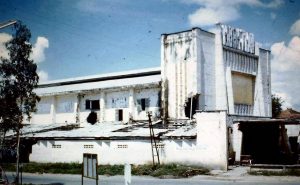
After Vietnam, Les was posted to PNG where he was involved in repairing and building roads. At one time he found a crashed Japanese Zero which had been shot down into the dense tropical jungle and which still had the skeletal remains of the Japanese Pilot.
Always love a woman for her personality.
They have like 10, so you can choose.
One afternoon, while Sambo was in Vung Tau, one of the Caribous returned to base after having an altercation with what can only be described as a high flying “tree”. The story goes that during its take-off roll, the aircraft “slipped” on the wet and muddy PSP and failed to clear a strategically placed tree a short distance from the runway threshold. Investigations later found that Vietnamese trees are actually made from marine ply which is obviously why the local fisherman use these trees to build their sampans. Sambo and Col Peterson worked through the night and about 4.00am next morning, had stitched up the unprotected belly of the aircraft and had it back on the line.
Another time one of the 7 Caribous on line suffered some damage to its side door which required it to be removed for repairs. Sambo asked one of the framies (a Sgt – no names, no pack-drill) to get the door off so it could be taken back to metal basher castle for some TLC. The framie suggested Sambo just pull the handle situated at the rear of the aircraft as (he said) that released the door. An argument ensued, Sambo telling the framie that he was sure that handle was to drop the cargo door not the small entry door. The out-ranking framie got hot under the collar, leapt into the aircraft and gave the handle a mighty tug after which the cargo door very noisily parted company with the aircraft and plummeted to the ground. Luckily no one was under the door at the time.
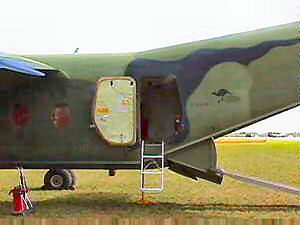
Immediately the aircraft and the errant door were surrounded by the amused squadron personnel, most of whom were laughing uncontrollably. After things cooled down, the door was taken into the metal shop for repairs and then refitted with some difficulty as it had twisted and didn’t go back without a fight.
The squadron personnel would do the A, C and D services on the aircraft, but the E (major) service was done in Malaysia. These flights were a good opportunity to take some of the troops out of Vietnam for a few days and Sambo managed to have himself included on the manifest for one such flight. On arrival at Butterworth, he and a few of his mates caught the ferry and headed straight for the shopping mecca on Penang Island where they hired a car and toured the island. One point of interest was the rail journey to Penang Hill. This railway was opened in October 1923 and required passengers to change trains half way up where they boarded the cable driven cars. The top section was a funicular railway where a cable is attached to a pair of carriages, one of which goes up while the other goes down – counter-balancing each other. The railway was opened to the public in October back in 1923 and continued to serve the public until 1977 when new air-conditioned cars were introduced which now take passengers from bottom all the way to the top.
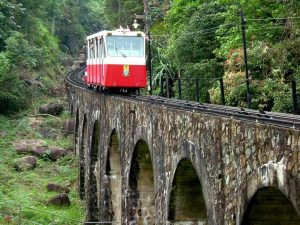
Back in Penang, apart from buying the SLR camera and stereo, as a joke he ordered 3 pairs of slacks, one green, one blue and one red. Not intending to ever pick them up, he only paid a small deposit, then a few days later boarded the Caribou for the exciting return trip to Vung Tau. What he didn’t count on was the tailor being a super sleuth as he somehow managed to trace Sambo back to Vungers whereby he had to pay the balance and take possession of the strides which he wore for some years after.
He also went on a 7 day R and R trip to Taipai, the cheap man’s Hong Kong. He went over and back via PanAm and came back armed with a new set of Wilson golf clubs which he was able to use for many years back in Oz, then sell for better than he paid for them. He also found time to scientifically check out quite a few of the local bars.
On return to Australia he was posted to 2FTS in Pearce to work on the Macchi where he was put to work carrying out a lot of mods. After about 4 months, a metal basher at Amberley wanted an exchange posting to Pearce to be with his sick father. Sambo exchanged with him and ended up at 3AD. During his time in Perth, he had bought a red 128 Fiat which he drove over the Nullarbor to Amberley, carrying another bod who had also been posted to Amberley. With mileage, subsistence and other expenses paid by the RAAF he ended up with a nice little profit.

Back at Amberley he was, once again, working on the Canberras and also the Iroquois as these aircraft were being repatriated from Vietnam. Some of these aircraft were sent to 3AD for major servicing before being put back on the line in Australia. The Iroquois required their work decks to be replaced and Sambo found his days were tied up repairing these aircraft.
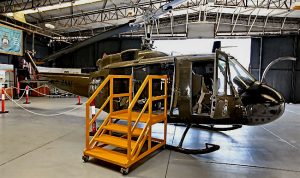
He was married in 1972, while still in the RAAF and they had one daughter who was born in 1975. Sadly he divorced later that year and ended up with full custody of the daughter who he raised as a sole parent and who has since presented him with two lovely grand kids.
After his RAAF time, he bought a taxi licence (in 1988) and got to know most of Brisbane’s streets and short cuts, the whereabouts of all the public toilets, where to get a good coffee late at night and where to get a good cheap meal. He sold the license in 1992 and although he didn’t make a lot of money on the sale, he reckons he lived pretty well when he had it.
About 15 years ago, but who’s counting, he met the lovely Andrea who instantly swept him off his feet – and they’ve been together ever since.
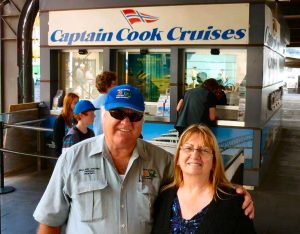
Then, a chance encounter with his nephew led to him becoming involved with the Arana Hills Football Club. At first he would just help out in minor ways but gradually his involvement grew and it wasn’t long before he was the manager of the teams and on the board of the Arana Leagues (Social) Club – a position he held for 11 years. During his stewardship, he was responsible for raising a considerable sum of money for the juniors.
It was about this time that he commenced “negotiations” with the DVA for increased compensation for injuries he had suffered in Vietnam. He had been on a 10% disability pension as a result of a “bung” knee and after a lengthy battle and a lot of help from the Veterans Support and Advocacy Service at Toowong, the pension was upgraded to TPI rate.
Some years ago, John Webster, who was the Secretary/Treasurer of the RTFV-35 Sqn Association, decided he needed a tree change and moved south to the ACT. The Association was looking for a replacement and Sambo forgot to take a step backwards with everyone else. He has been the enthusiastic Secretary/Treasurer boss ever since and says one of the “perks” of the job has been the re-connecting with old mates he first met in Vung Tau.
Today, rapidly approaching the magic age of 70 years, he takes things a bit slower, he’s still a keen golfer and enjoys a game or two each week and finds (and enjoys) the RTFV-35 Sqn duties keep him well and truly occupied.
